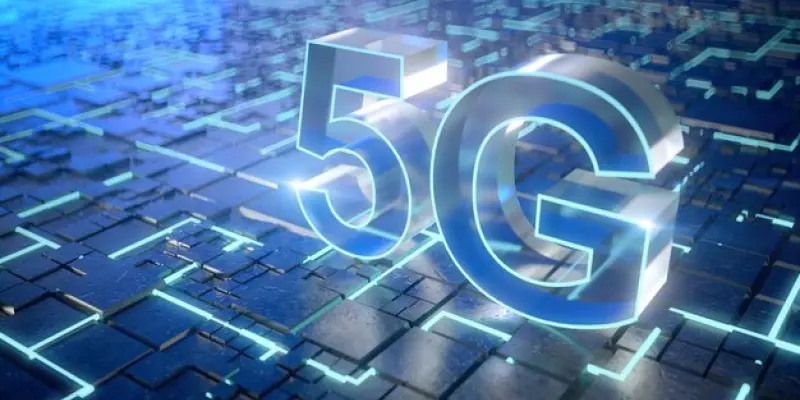The telecommunications industry is witnessing a transformative era marked by the widespread adoption of 5G technology and the brewing conversation around the upcoming 6G networks. Industry leaders are deeply investing in advancing communication infrastructure, signaling a pivotal shift toward enhanced connectivity and automation. Companies like Ericsson and Telenor IoT are at the forefront, channeling significant resources to drive technological advancements. These developments, however, are not without challenges, as security concerns and strategic mergers are reshaping the landscape, with geopolitical factors playing a crucial role. This comprehensive exploration delves into how these elements collectively redefine the industry.
Advancements in 5G and Emerging Discussions on 6G
Pioneering Investments in Network Technology
In the current landscape, telecommunications companies are racing to harness the full potential of 5G technology while already paving the way for discussions around future 6G networks. This trend is exemplified by Ericsson’s substantial €200 million investment in Ireland, aimed at leveraging the capabilities of 5G Standalone technology. Such investments spotlight a fervent desire to enhance network management and IoT services, representing a significant stride toward comprehensive automation and improved connectivity. As telecom giants look ahead, the potential encompassed by 6G presents a realm of unexplored opportunities, pushing the boundaries of possibility in communication.
Moreover, Telenor IoT’s adoption of the GSMA’s eSIM standard further underlines an industry-wide shift toward streamlining remote SIM management. This move not only facilitates more efficient IoT operations but also highlights the demand for scalable solutions that cater to diversified communication needs. With each step, telecommunications providers are positioning themselves at the forefront of an increasingly interconnected world, heralding a new era where digital communication knows no bounds. As technological innovation continues to accelerate, the pivot toward the next generation of networks is accompanied by an equally pressing focus on securing the digital terrain.
Addressing the Ever-Growing Demand for Data
As the landscape evolves, there is a palpable surge in the demand for data and network services, a phenomenon intricately linked to the burgeoning mobile service revenue, as seen in regions such as Malaysia. This increased demand has fostered competition, particularly encouraging a shift toward more competitive dual-network models. These models are instrumental in improving service offerings as telecommunications providers strive to meet the rising expectations of a digitally empowered consumer base. This scenario sets the stage for strategic collaborations and innovations aimed at enhancing user experience and ensuring seamless connectivity.
Amidst these advancements, the discourse surrounding technological autonomy becomes ever more significant. As nations reassess their reliance on satellite service providers, the need for a robust and secure telecommunications infrastructure becomes paramount. This reevaluation underscores the importance of strategic foresight in network deployment and service management. Consequently, telecommunications giants worldwide are working to strike a delicate balance between rapid technological advancement and maintaining rigorous security protocols, thus ensuring that consumers benefit from reliable and secure access to cutting-edge communication technology.
Geopolitical Implications and Security Concerns
Reassessing Dependencies in a Global Ecosystem
The intersection of telecommunications and geopolitics has introduced complexities in assessing dependencies on foreign-manufactured telecommunications equipment, particularly with regard to Chinese brands such as Huawei and ZTE. Countries like India have adopted a cautious approach, scrutinizing these manufacturers with the aim of safeguarding national security. This scrutiny reflects a wider strategic goal to diminish reliance on potentially unstable vendors, reinforcing the need for secure and autonomous technological solutions. As geopolitical tensions influence decision-making processes, the telecommunications industry is prompted to reevaluate existing partnerships and strategies. In parallel, the Federal Communications Commission (FCC) has advised European nations to reconsider their dependence on satellite services like Starlink. This caution highlights the broader strategic implications of ceding control over critical communication infrastructure to external entities. This shift underscores the necessity for countries to cultivate self-sufficient and resilient networks, further driving innovation and investment in domestic technological advancement. Navigating these geopolitical currents demands strategic resilience and adaptability from telecommunications providers, ensuring their operational stability amid a shifting global landscape.
Strategic Responses and Infrastructural Developments
In response to these challenges, infrastructure development and strategic mergers are gaining prominence. A notable example is seen in Vodafone and Three’s venture into bundled Pay-TV services. This move exemplifies how mergers can diversify consumer engagement and expand service offerings amidst a competitive market landscape. The emergence of competition with players like Virgin Media O2 and BT demonstrates the dynamic nature of the streaming market, where adaptability and innovation are essential for sustaining growth and retaining consumer interest.
Furthermore, Rogers Communications’ investment of CAD $7 billion, backed by Blackstone, underlines the integral relationship between financial strategy and infrastructural prowess. This investment portends a future where financial decisions directly influence infrastructure control, particularly in post-acquisition contexts. The evolving narrative of mergers and investments is indicative of an industry that is continuously adapting to new technological paradigms while remaining cognizant of the security and regulatory implications that accompany such endeavors. These strategic maneuvers are instrumental in defining the trajectory of telecommunications as it faces the challenges and opportunities of the future.
Navigating a Transformative Era
The telecommunications industry is undergoing a significant transformation, highlighted by the expansive rollout of 5G technology and discussions concerning the imminent 6G networks. Industry giants are devoting substantial resources to enhance communication infrastructure, signaling a crucial shift toward improved connectivity and automation. Key players such as Ericsson and Telenor IoT lead the charge, investing heavily in pushing technological boundaries. Despite progress, challenges persist, notably in the realms of security concerns and strategic mergers, which are reshaping the industry’s trajectory. Geopolitical factors add complexity to these changes, influencing decisions and strategies within the sector. This in-depth examination looks at how these multifaceted elements collectively redefine the future of telecommunications, paving the way for advanced communication solutions that will redefine global connectivity and technological integration in the years to come.

